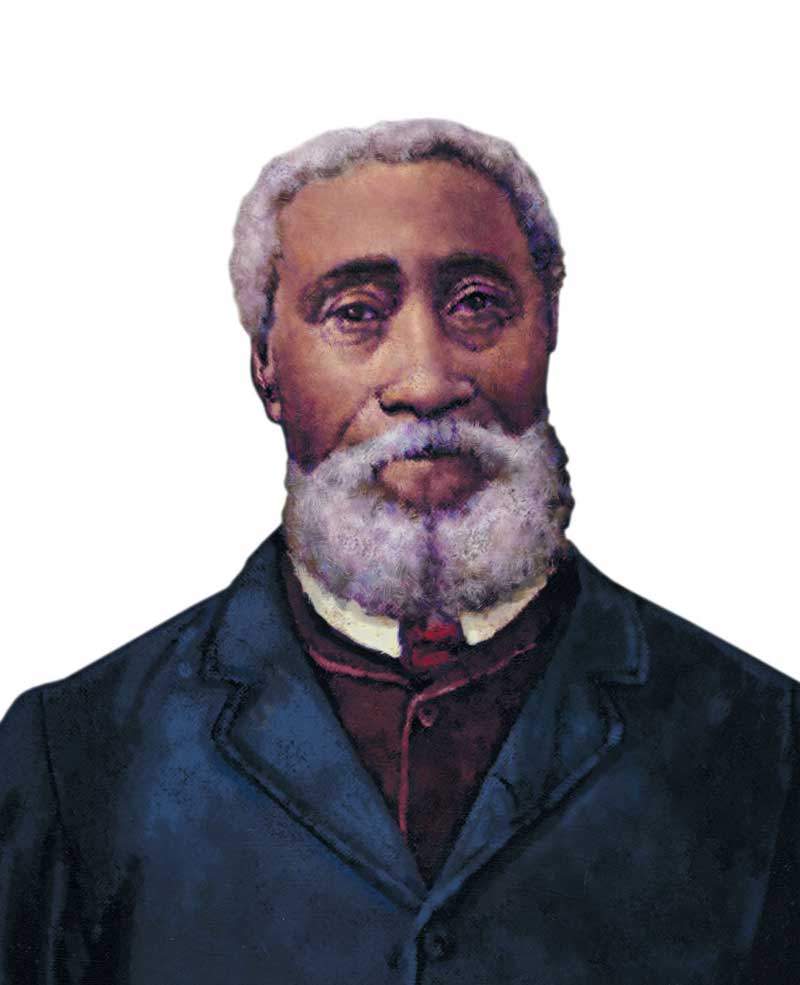
A portrait of William Hall during his days as a petty officer 1st class aboard HMS Shannon. [Sharif Tarabay]
Hall, of Horton, N.S., was the son of former Black slaves from the United States. He worked in the Hantsport shipyards, before serving on a merchant vessel, followed by a couple of years in the United States navy.
In 1852, he enlisted in the Royal Navy in England, joining the crew of HMS Rodney. He earned medals from Britain and Turkey for his service during the Crimean War, when he lent a hand to ground forces operating the heavy gun batteries.
His career prospered. He was serving on HMS Shannon, which was escorting troops to China, when it was dispatched to help quell a mutiny in India.
Sepoys, Indian soldiers serving the British East India Company, rebelled in what is variously called the Sepoy Mutiny or the First War of Independence, depending on perspective.
The revolt began with the introduction of a new weapon, the Enfield rifle, which required troops to bite off the end of cartridges that were rumoured to be lubricated with fat from pigs and cows. This insulted sepoys of two religions: Muslims who do not eat pork and Hindus who do not eat beef.
But the religious insult may have been a pretext, for there was widespread and growing unrest over British domination of every important aspect of Indian life from politics to finance to culture—even to interfering in the succession of Hindu rulers.
The Indians wanted independence and were ripe for rebellion.
In the end, only Hall and Lieutenant Thomas Young, a wounded officer, were left to work the gun.
Hall was among about 400 crew and marines from Shannon who travelled about 1,000 kilometres from Calcutta to Cawnpore (now Kolkata and Kanpur), dragging eight-inch guns and 24-pounder howitzers.
From there they joined the relief force marching to Lucknow, which they attacked on Nov. 16, 1857.
It took some effort to breach the thick, double walls of a mosque from which 30,000 defending sepoys could attack the British crews.
After the first wall was breached, the Shannon crew began shelling the inner wall, enduring relentless fire from the sepoys above. The crew was so close, said Hall that “after each round we ran our gun forward until at last my gun’s crew were actually in danger of being hurt by splinters of brick and stone torn by the round shot from the walls we were bombarding.”
In the end, only Hall and Lieutenant Thomas Young, a wounded officer, were left to work the gun until the wall finally opened. Both were recommended for the Victoria Cross.
Hall’s naval career continued even after he was presented his VC in 1859. He climbed the ranks, becoming quartermaster before retiring in 1876.
The sepoys achieved one victory: they broke the shackles of the East India Company. However, they did not throw off the British yoke for nine decades, as the British government took over administration of the colony. India and Pakistan gained independence in 1947.
Meanwhile, Hall retired to farm in Nova Scotia, where his feats went unheralded, until a parade of British veterans in 1901 during which Hall wore his medals.
He died three years later and was buried, without military honours, in an unmarked grave.
He was reinterred in 1945 in the grounds of Hantsport Baptist Church. On the monument nearby, an enlarged replica of the Victoria Cross appears along with a plaque describing his feats.
HMCS William Hall, a new Arctic patrol ship, is named in his honour.
Advertisement


















